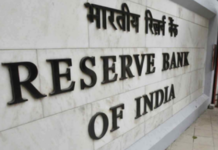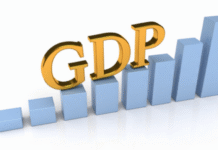New Delhi– India’s annual retail inflation declined in November to its lowest level in the last 24 months, official data showed on Tuesday.
According to Consumer Price Index (CPI) data released by the Central Statistics Office (CSO), the annual retail inflation eased last month to 3.63 per cent from 4.20 per cent in October and 5.41 per cent reported during the corresponding period last year.
The fall in CPI was mainly due to a drop in the annual food inflation — to 2.11 per cent in November from 3.32 per cent in October.
The CPI data revealed that the annual retail inflation for rural India was 4.13 per cent while that for the urban centres was 3.05 per cent. The annual food inflation was 2.87 per cent in rural areas and 0.75 per cent in the urban conclaves.
The official data disclosed that prices of vegetables plunged by (-)10.29 per cent on a year-on-year (YoY) basis, whereas cost of pulses was marginally up by 0.23 per cent.
The prices of milk and milk-based products surged by 4.57 per cent. Other protein-based food items such as meat and fish became dearer by 5.83 per cent.
Eggs became expensive by 8.55 per cent and the cost of spices rose by 6.48 per cent.
Edible oils and fats prices increased by 2.70 per cent, whereas those for sugar and confectionery edged up by 22.40 per cent on a YoY basis.
The cost of cereals and its products appreciated by 4.86 per cent, however, prices of fruits were up by 4.60 per cent.
The easing of key price indices makes the context favourable for a rate cut by the Reserve Bank of India (RBI) at its next monetary policy review due in Februray 2017.
Among the states, the retail inflation was lowest in Chhattisgarh, at 0.98 per cent, followed by Tamil Nadu at 1.79 per cent, and Assam at 1.97 per cent.
On the flip side, it was as high as 5.67 per cent in Jharkhand, 5.45 per cent in West Bengal and 5.24 per cent in Telangana.
This is the fourth month when the annual retail inflation has come below the upper tolerance level of six per cent.
The government target is four per cent plus-or-minus two percentage points for the next five years.
“The November CPI inflation at 3.63 per cent was lower on the back of falling food prices though some high frequency indicators were signaling some uptick in cereals and cereal products,” Suvodeep Rakshit, Senior Economist at Kotak Institutional Equities, was quoted as saying in a statement.
“Core inflation remained steady at 4.9 per cent belying any indication of demonetisation effects. In fact, it would be premature to indicate the impact of demonetisation on CPI inflation — either from the demand or from the supply side.”
Rakshit predicted that December also will likely see a sub-four per cent print with the trajectory inching back towards the five per cent mark by March 2017, mostly on base effects.
“The November inflation print keeps the February RBI policy meeting alive though we should wait for the advance estimates of GDP and the December CPI print before penciling in RBI’s next move,” Rakshit elaborated.
Soumya Kanti Ghosh, Chief Economic Adviser and GM, Economic Research Department, SBI, said that the 24-month low CPI inflation didn’t come up as a “surprise at all”.
“Significant decline in vegetable prices contributed to easing of food inflation, thereby leading to fall in overall CPI. Lower demand owing to demonetisation has resulted in complete collapse in vegetable prices,” Ghosh said.
“We have estimated that due to demonetisation there would be 40 bps (basis points) decline in inflation in November and 20 bps in December.” (IANS)






